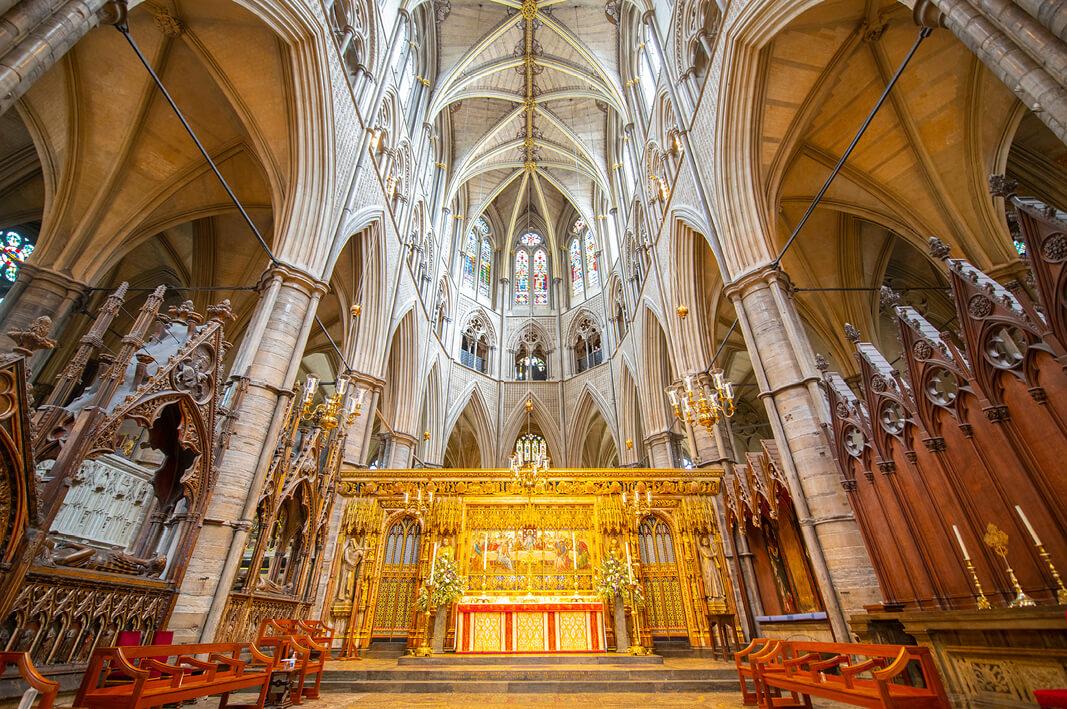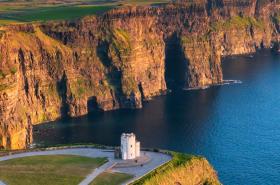As the reign of King Charles III moves forward, and Britain returns to some kind of normality, it will be possible for everyone to visit many of the places connected with the passing of Queen Elizabeth II. Steeped in regal history, these storied addresses welcome tourists at various points of the year.
BALMORAL ESTATE
Queens Final Journey_BalmoralCastle.jpg

The Queen died at Balmoral, her family’s private Scottish country retreat, where she would often spend a few months in summer. Nestled in the Cairngorms National Park, it was described as a “paradise in the Highlands” by Queen Victoria, whose husband, Prince Albert, purchased the estate in 1852 and had constructed here a castle embellished in an eye-catching Scottish Baronial style. Balmoral is usually open to the public between April and August, when one can enter the castle’s art-adorned ballroom and explore the wider grounds, either on foot or on a Landrover expedition, passing picturesque gardens, heather-tufted grouse moors, ancient Caledonian pine forest and a loch, beside which is the lodge where Queen Victoria sought solitude after Albert’s death. You can book a ghillie - an expert local guide - for an angling experience by the River Dee. Prince Philip, the late Duke of Edinburgh, liked to fly-fish for trout and salmon here. If you fancy sticking around Balmoral, you can rent one of the estate's holiday cottages.
EDINBURGH
Queens Final Journey_Holyrood.jpg

After her death, a cortege took the Queen’s coffin from Balmoral to Edinburgh, and to the monarch's official residence in Scotland, the Palace of Holyroodhouse, where Her Majesty would typically stay for a week each summer. Visitors can normally enter the palace and gardens throughout the year, with a self-guided audio tour ushering you into the royal apartments and detailing the building’s fascinating (and at times bloody) history. Browse portraits of Scottish kings and queens in the Great Gallery, and scale the stairs to the chambers of Mary, Queen of Scots, where, in 1566, the pregnant monarch was restrained by her husband, Lord Darnley, as his henchman stabbed to death her secretary - and rumoured lover - the Italian courtier, David Rizzio. This palace looms at one end of the Royal Mile, a photogenic stretch that slopes down from Edinburgh Castle and is edged by other notable landmarks, including St Giles’ Cathedral, where the new king, Charles III, and other royals attended a memorial service for the late Queen.
LONDON
Queens Final Journey_westminster_Abbey.jpg

The Queen’s body was flown to London and taken to Buckingham Palace, where she lived for the bulk of her 70-year rule and gave birth to three of her four children - the new king and Princes Andrew and Edward. Between July and October, and for a limited number of dates in December, January and at Easter, visitors can enter the palace and visit some of the 775 rooms. Highlights include the chandelier-strewn throne, music and ballrooms, and other ostentatious quarters flaunting art and furnishings from the prestigious Royal Collection. Some tickets allow access to the palace garden, where the Queen hosted numerous parties and gatherings down the years. Most of the year you can book tours at the Palace of Westminster, a complex that is informally known as the Houses of Parliament. Its hall staged the Lying-in-State of Her Majesty, attracting members of the public who wished to pay their respects (and were, in some cases, happy to queue overnight to do so). Her funeral was held at nearby Westminster Abbey, which you can either visit independently or on a guided tour. The Gothic abbey has a rich royal history, having witnessed the coronations of almost every English sovereign since William the Conqueror, including Queen Elizabeth II. She also got married here, as a princess, in 1947.
WINDSOR CASTLE
Queens Final Journey_Windsor.jpg

Following the funeral, Her Majesty’s coffin was taken west of London to Windsor Castle, which was a popular weekend getaway for the Queen and also where she entertained VIPs for state banquets. Built for William the Conqueror, and expanded through the ages, the castle usually welcomes paying punters year-round. An entrance ticket includes admission to the lavishly-gilded state apartments (some of which were restored after a fire in 1992), and St George’s Chapel, the site of many royal burials and weddings (including Prince Harry and Meghan’s). The Queen was laid to rest at the chapel and reunited with her late husband, Prince Philip, her mother, Elizabeth, and father, King George VI. Stretching out from the castle is Windsor Great Park, a huge former hunting ground refashioned as leisure-seeker’s haven. You can enjoy scenic walks or cycling here - there's a 5km-long tree-lined avenue, manicured gardens, roaming deer, ponds, lakes and ancient oak forests. Or you can do as the Queen frequently did and saddle up for a horse ride around the park. There's even a statue here of Her Majesty, on horseback, looking towards the castle.












